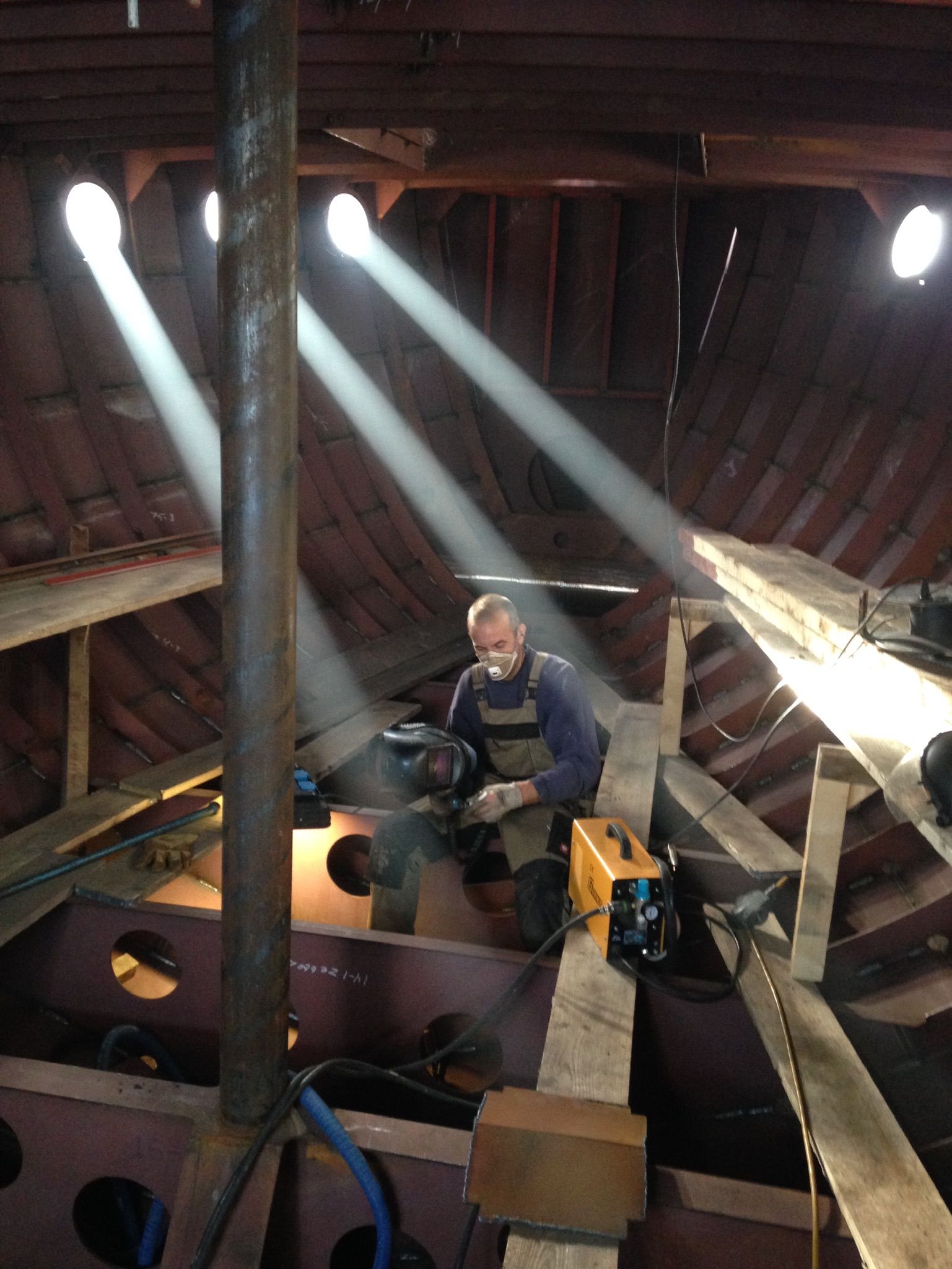The story
Dick Gilles himself lived on various types of sailing vessel and from that practical reality – and from his many years’ experience as a boatswain – he created an inventory of all the technical requirements for his housing dreams, before combining outstanding sailing characteristics with the comfort of a long stay on board.
The special features of the H2O
“Living on a ship is living in a direct relationship with nature. Every sunset is a direct and intense experience, whatever view you have. The stunning far-off views in the tropics or the skyline of a major city. It also makes you realise that supplies of water are not infinite, and that everything you bring on board has to come off again. For me, the awareness of living and your ecological footprint in your immediate surroundings is an enriching experience. The definition of
minimalist living, to me, is an efficient and effective living environment without unnecessary ‘things’ or ballast in your life. On the H2O I feel freedom, and yet I am surrounded by comfort. Here, I can embark on adventures and pursue my lifestyle. And all that on a robust and seaworthy yacht.
This is an ecologically responsible project and gives back to the earth what it has given to people. The H2O is not just a gift to myself, a dream that has become reality, because many other people have been involved with the building of this ship. It is at once an example and a learning project. That is something I would wish for anyone.”
The words of inventor and initiator Dick Gilles.
Leader in home comfort
The following conditions have been put in place in order to meet home comfort requirements.
- Enough headroom and the space of a proper apartment (around 75m2).
- Three bedrooms, two bathrooms, and a separate toilet.
- Practical kitchen with every type of in-built appliance, including fridge, freezer, microwave, oven, induction hob, dishwasher, and lighting.
- A pleasant ambience thanks to the abundance of daylight, efficient and effective ventilation, and heating. This means, among other things, underfloor heating, high-quality insulation, and double glazing.
- Easily accessible amenities, such as the utilities area for washing machine, dryer and other appliances, with safe connections to water, electricity, and sewerage systems (quick-connect couplings).

A seaworthy yacht
Any vessel is only as seaworthy as its crew. The sailing characteristics of the H2O were therefore greatly important during the design phase. Thanks in part to the solid ballast, the ship is stable and moves with ease during heavy swell. It can be sailed with a small crew (two people) over long distances. This is achieved with the following amenities.
- The mast, rigging, stays, and booms are built to withstand rough weather conditions. All hatches, doors, windows, and portholes can resist powerful waves.
- The mast, rigging, stays, and booms are built to withstand rough weather conditions. All hatches, doors, windows, and portholes can resist powerful waves.
- The ship is able to sail away from a lee shore.
- The H2O can cover long distances, for a speedy voyage.
- There is sufficient space for storing water, provisions, and fuel.
- Hot meals can be prepared in the kitchen, even under rough weather conditions.
The H2O is robust, strong, and safe.
- It is self-righting, which means it always returns to an upright position, automatically.
- Thanks to its strong construction and hull shape, the H2O is easily capable of withstanding heavy swell.
- And its relatively small draught (1.95m) means it is able to visit smaller harbours and inland waterways, without any concessions to its seaworthiness.
Outstanding sailing characteristics
The ship is suitable for a relatively large crew – after all, whole families have to be able to live on it. It is relatively heavy, with a high level of water displacement, but a major advantage is the calmness with which it glides over the water. We achieve this as follows:
- The keel is rather longer, with a contiguous rudder. This allows much more space for the required ballast, while the centre of gravity in the deep keel has hardly changed.
- The lateral point has been somewhat raised, and the centre of effort has remained in the same place. As a result, the ship sails at a slightly pitched angle. The long keel runs far beyond the ship’s centre of gravity so that it does not tilt forward in shallow waters, when moored.


